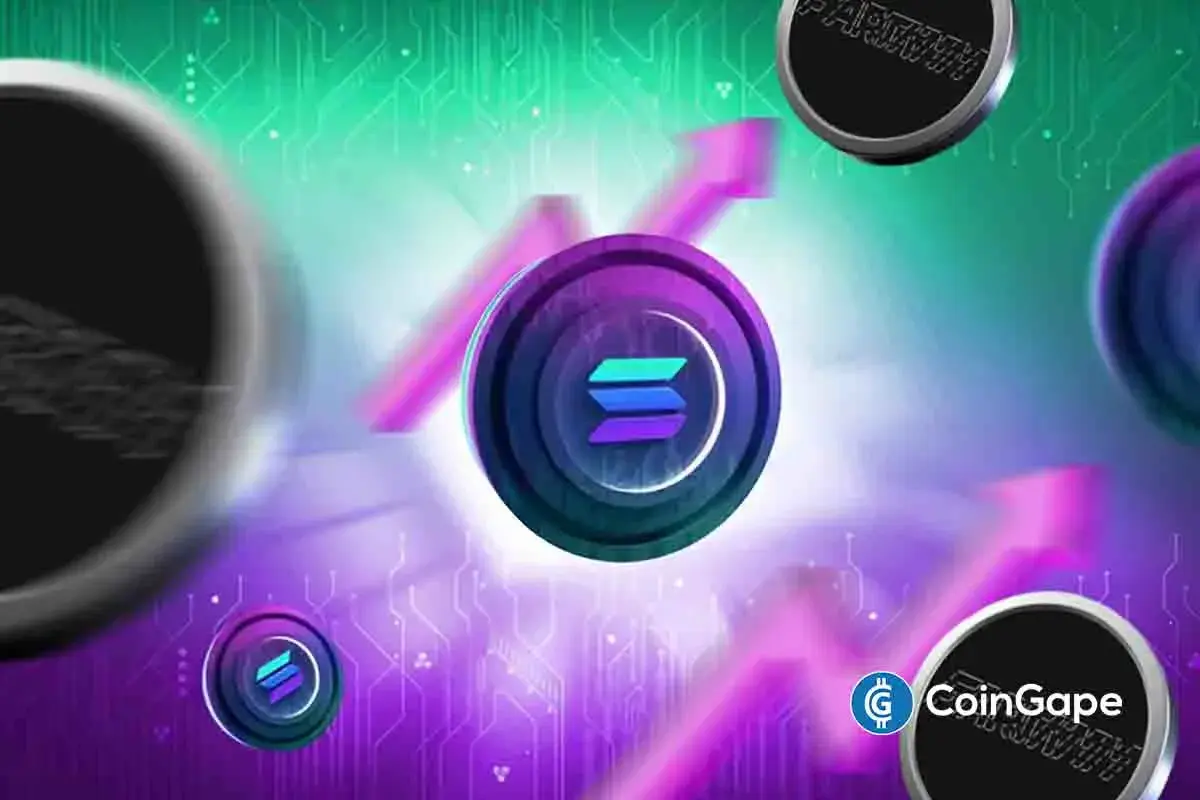Market
Token Unlocks to Watch Next Week: TIA, SUI and OP
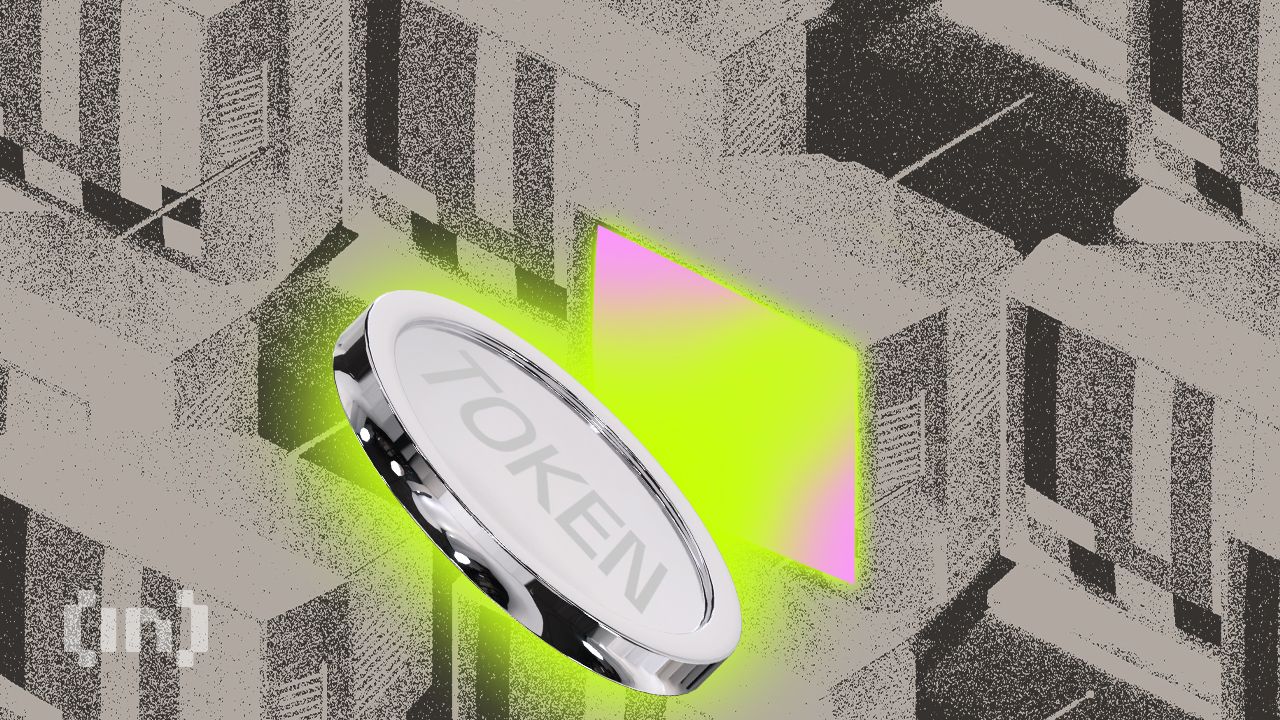
Token unlock involves releasing tokens that were previously blocked under fundraising terms. Projects carefully schedule these releases to avoid market pressure and prevent a drop in token prices.
Here are five major token unlocks to keep an eye on next week.
Celestia (TIA)
- Unlock date: October 30
- Number of tokens unlocked: 175.59 million TIA
- Current circulating supply: 220.16 million TIA
Celestia, a modular data availability network, simplifies blockchain launches. On October 30, Celestia will unlock 175.56 million TIA tokens, valued at $920 million, and allocate these coins to early backers and initial core contributors. This massive unlock has sparked concerns about potential selling pressure.
“While some argue for a “bullish unlock” due to OTC activities, simple market dynamics tell a different story. The tokenomics design shows concerning flaws that can’t be ignored. TIA has potential for 3-digits IF the tokenomics weren’t so manipulated. But with VCs having such enormous profit margins and this aggressive unlock structure, we’re looking at significant downward pressure,” one X user wrote.
Read more: What Is Blockchain and How Does it Work?
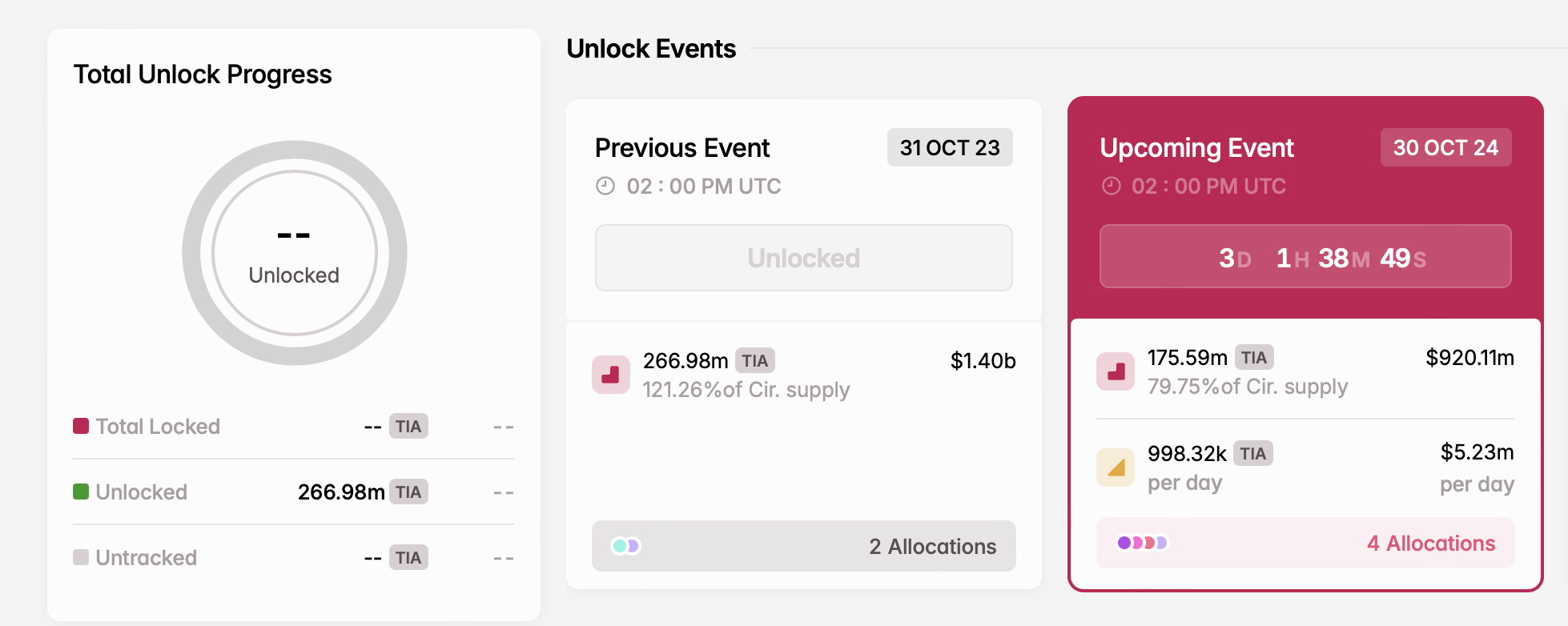
Optimism (OP)
- Unlock date: October 31
- Number of tokens unlocked: 31.34 million OP
- Current circulating supply: 1.25 billion OP
Optimism is a Layer-2 scaling solution designed to improve the speed and lower the costs of transactions on the Ethereum mainnet. The OP token plays a crucial role in governance, allowing holders to vote on proposals and decisions that shape the network’s development and management.
On October 31, Optimism will increase its circulating supply by 31.34 million OP. According to Tokenomist (formerly TokenUnlocks), the project will allocate these tokens to core contributors and investors.
Read more: Optimism vs. Arbitrum: Ethereum Layer-2 Rollups Compared
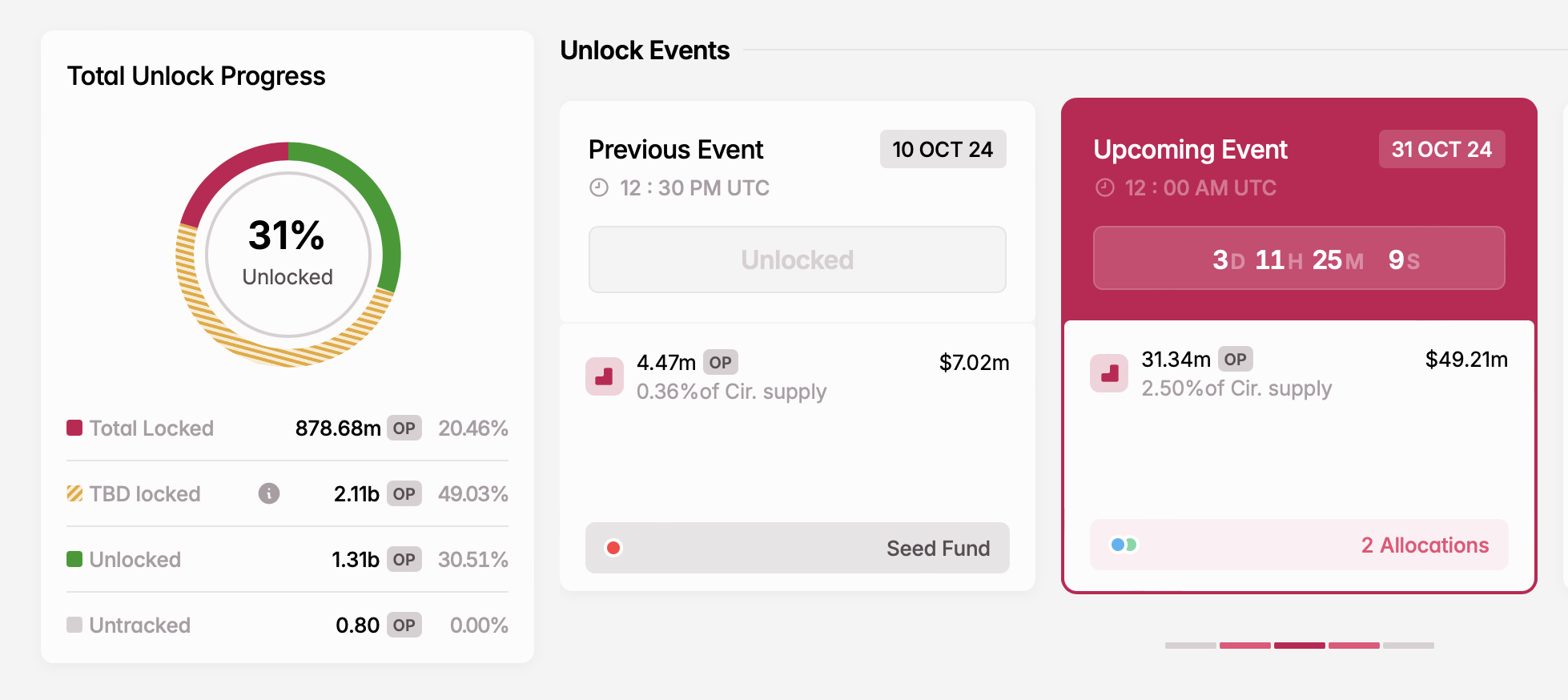
Sui (SUI)
- Unlock date: November 1
- Number of tokens unlocked: 64.19 million SUI
- Current circulating supply: 2.76 billion SUI
Sui is a high-performance Layer-1 blockchain that utilizes a Proof-of-Stake consensus to increase network operation and security. The project was developed by Mysten Labs, a company founded in 2021 by former Novi Research employees who created the Diem blockchain and the Move programming language.
The SUI token facilitates governance, enabling token holders to vote on important proposals and shape the platform’s future. The next unlock will happen on November 1, releasing a large portion of tokens set aside for Series A and B participants, community reserve, and the Mysten Labs treasury.
Read more: A Guide to the 10 Best Sui (SUI) Wallets in 2024
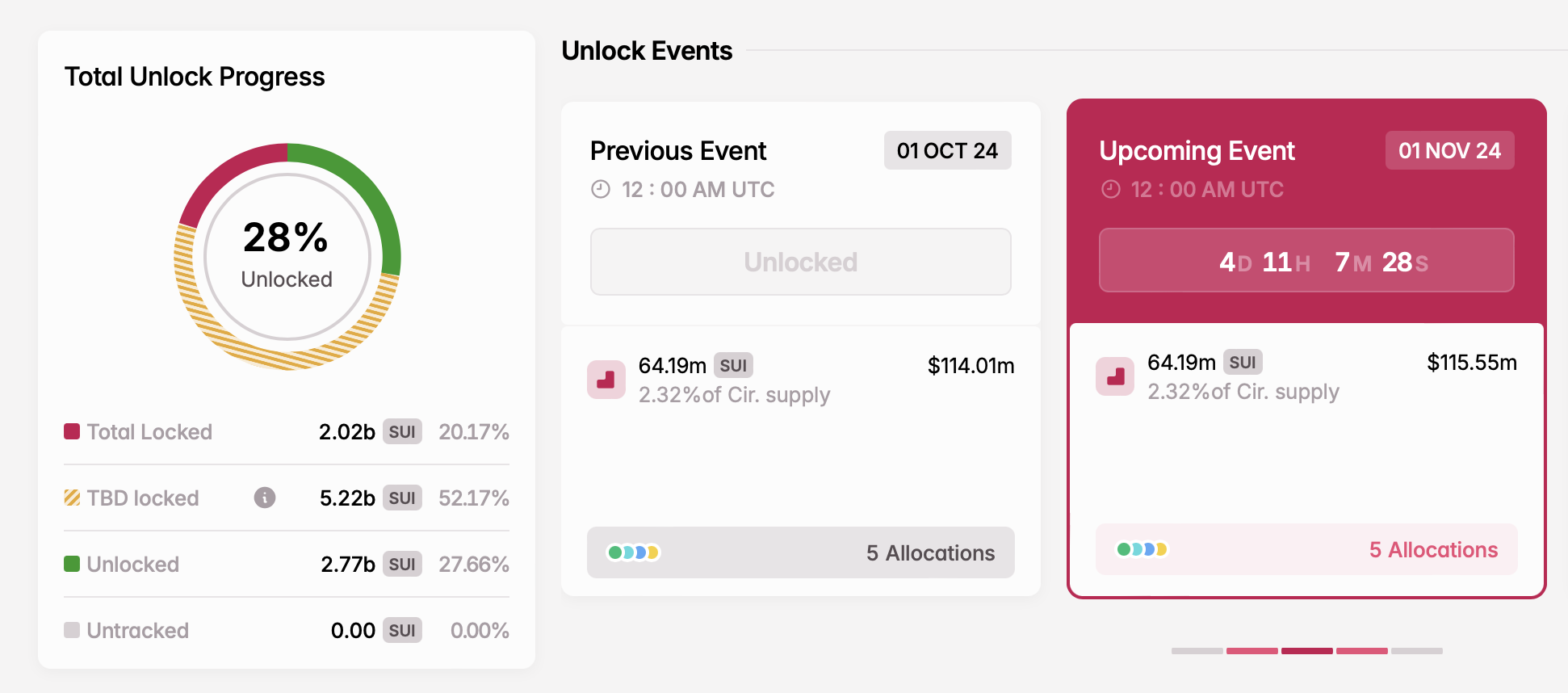
Immutable (IMX)
- Unlock date: November 1
- Number of tokens unlocked: 32.47 million IMX
- Current circulating supply: 1.63 billion IMX
Immutable is a Layer-2 solution for scaling NFTs on the Ethereum blockchain. In September 2021, the project raised $12.5 million during the IMX token sale on the CoinList platform in just one hour. In March 2022, it closed a $60 million investment round and secured an additional $200 million from investors, including ParaFi Capital, Declaration Partners, and Tencent Holdings.
On November 1, the circulating supply of IMX will increase by 32.47 million tokens. These newly unlocked coins will be allocated to the development of the project and the broader Immutable ecosystem.
Read more: What Is Immutable?
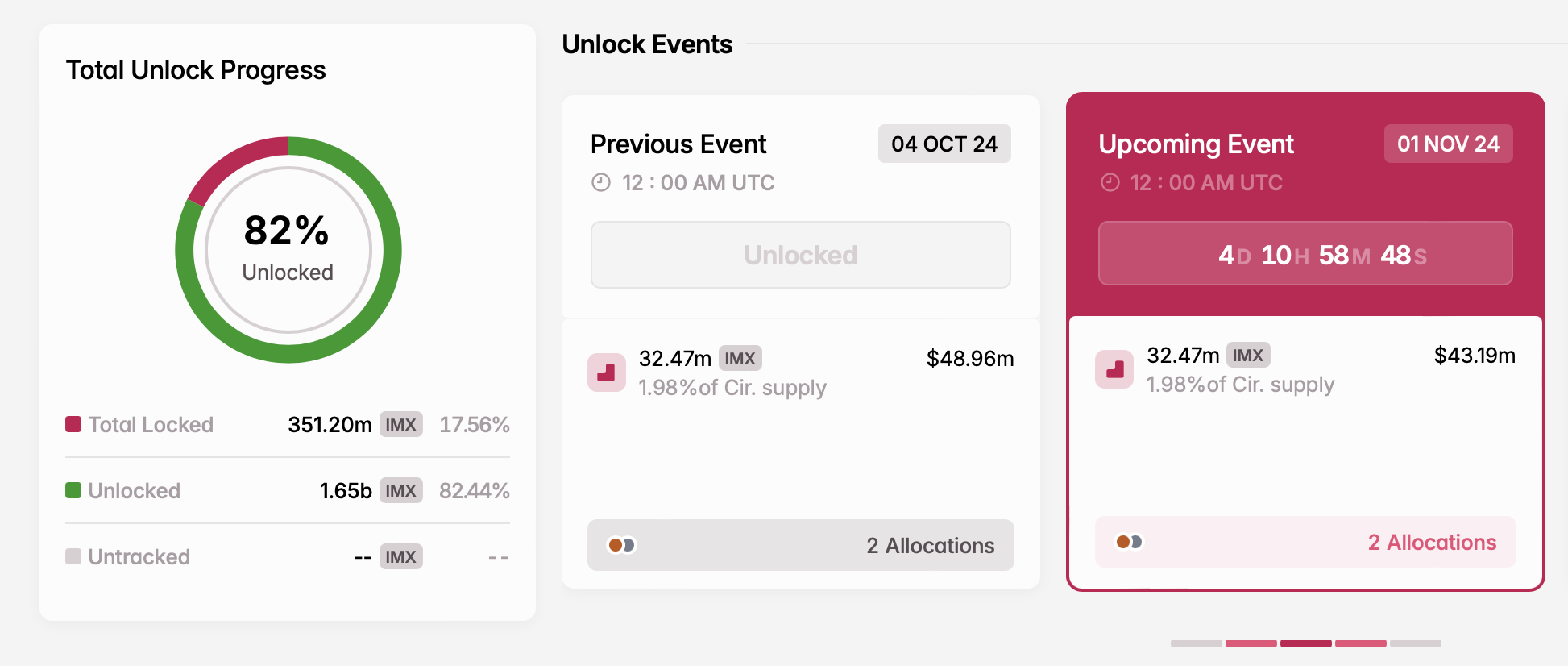
ZetaChain (ZETA)
- Unlock date: November 1
- Number of tokens unlocked: 53.89 million ZETA
- Current circulating supply: 459.59 million ZETA
ZetaChain is a decentralized blockchain platform that enables seamless interoperability across various blockchain networks. One of its main features is cross-chain communication, which allows for the exchange of tokens and data between different blockchains, such as Ethereum and Binance Smart Chain.
On November 1, it will unlock nearly 54 million ZETA tokens. The newly released coins will be allocated across several initiatives, including a user growth pool, an ecosystem growth fund, support for core contributors, advisory roles, and liquidity incentives.
Read more: What Is Blockchain Interoperability?
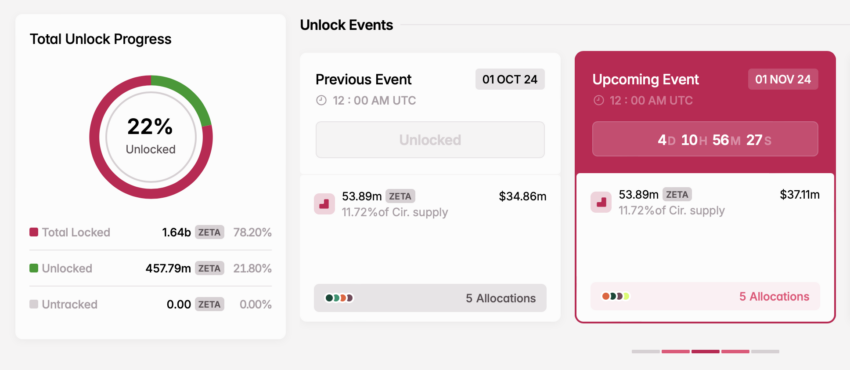
Next week’s smaller cliff unlocks include dYdX (DYDX), Galxe (GAL), Cardano (ADA), and Ethena (ENA), among others, with a combined value surpassing $1.24 billion.
While many see token unlocks as bearish, a well-structured schedule can actually support a project’s long-term success. Tied to key milestones and development, unlocks can motivate the team, engage the community, and drive ecosystem growth.
Disclaimer
In adherence to the Trust Project guidelines, BeInCrypto is committed to unbiased, transparent reporting. This news article aims to provide accurate, timely information. However, readers are advised to verify facts independently and consult with a professional before making any decisions based on this content. Please note that our Terms and Conditions, Privacy Policy, and Disclaimers have been updated.
Market
Ripple May Settle SEC’s $50 Million Fine Using XRP
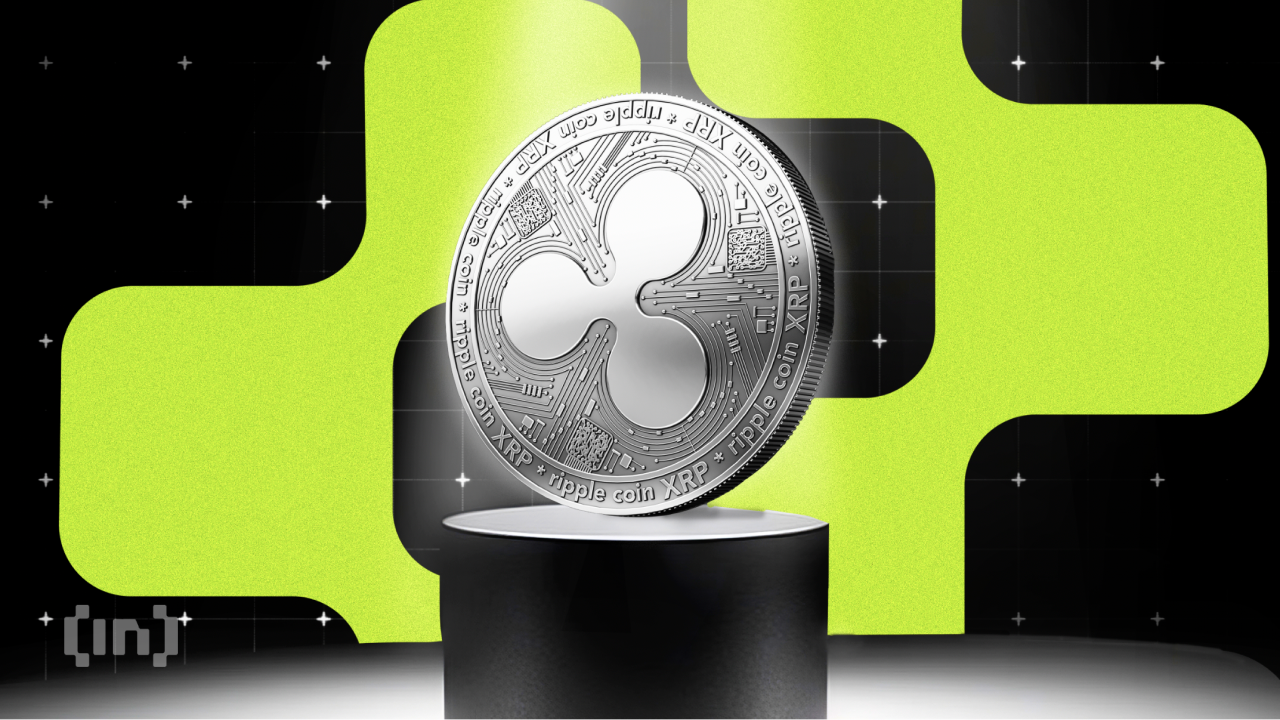

Ripple’s long-running legal clash with the US Securities and Exchange Commission (SEC) appears to be nearing its final chapter.
However, a surprising detail has emerged from the ongoing settlement talks, which could see Ripple pay its reduced $50 million penalty using its native token, XRP.
Ripple Could Use XRP Token to Pay SEC Fine
On April 11, Ripple CEO Brad Garlinghouse appeared on FOX Business. At the interview, he revealed that the idea of paying the penalty in XRP was floated during settlement discussions.
“The SEC is going to end up with $50 million and the US government gets $50 million and we talked about making that available in XRP,” Garlinghouse stated.
The ongoing negotiations follow Ripple’s and the SEC’s decision to drop their appeals, bringing the multi-year legal battle closer to closure.
“We’re moving past the SEC’s war on crypto and entering the next phase of the market – true institutional flows integrating with decentralized finance,” Garlinghouse added in a post on X.
Judge Analisa Torres originally set the fine at $125 million in 2024, linking it to Ripple’s unregistered XRP sales to institutional investors. Ripple complied by placing the funds in an interest-bearing account, but the appeals process delayed any further action.
With those appeals now abandoned, Ripple is expected to pay a reduced fine of $50 million.
A recent joint court filing confirms that both sides have reached a preliminary agreement. They are now seeking final approval from the SEC’s commissioners.
Once internal reviews are complete, the parties plan to request a formal ruling from the district court.
“There is good cause for the parties’ joint request that this Court put these appeals in abeyance. The parties have reached an agreement-in-principle, subject to Commission approval, to resolve the underlying case, the Commission’s appeal, and Ripple’s cross-appeal. The parties require additional time to obtain Commission approval for this agreement-in-principle, and if approved by the Commission, to seek an indicative ruling from the district court,” the filing stated.
If the commission votes in favor, this case could conclude one of the most closely watched regulatory battles in crypto history. More importantly, the use of XRP for the settlement could mark a significant shift in the SEC’s approach to digital assets.
This turnaround would represent a major regulatory shift and could trigger further bullish momentum for the token.
Since Donald Trump’s election victory in November 2024, investor confidence in XRP has grown sharply, pushing the token’s value up by more than 300%.
At the same time, institutional interest continues to rise, as seen in the wave of spot exchange-traded fund applications tied to the token
Market analysts have linked this performance to the friendlier political climate. They also point to the potential reclassification of XRP as a commodity as a key factor driving the asset’s rise.
Disclaimer
In adherence to the Trust Project guidelines, BeInCrypto is committed to unbiased, transparent reporting. This news article aims to provide accurate, timely information. However, readers are advised to verify facts independently and consult with a professional before making any decisions based on this content. Please note that our Terms and Conditions, Privacy Policy, and Disclaimers have been updated.
Market
Ethereum ETFs See Seventh Consecutive Week of Net Outflows

Ethereum ETFs have closed yet another week in the red, recording net outflows amid continued investor hesitation.
Notably, there has been no single week of net inflows since the end of February, highlighting waning institutional interest in ETH-related products.
Ethereum ETFs Face Steady Outflows
Ethereum-backed ETFs have recorded their seventh consecutive week of net outflows, highlighting sustained institutional hesitance toward the asset.
This week alone, net outflows from spot ETH ETFs totaled $82.47 million, marking a 39% surge from the $49 million recorded in outflows the previous week.

With the steady decline in institutional presence in the ETH market, the selling pressure on the coin has soared.
Over the past week, ETH’s price has declined by 11%. The steady outflows from the funds backed by the coin suggest that the downward momentum may persist, increasing the likelihood of a price drop below the $1,500 mark.
On the price chart, technical indicators remain bearish, confirming the mounting pressure from the selling side of the market. For example, at press time, readings from ETH’s Directional Movement Index (DMI) show its positive directional index (+DI) resting below the negative directional index (-DI).
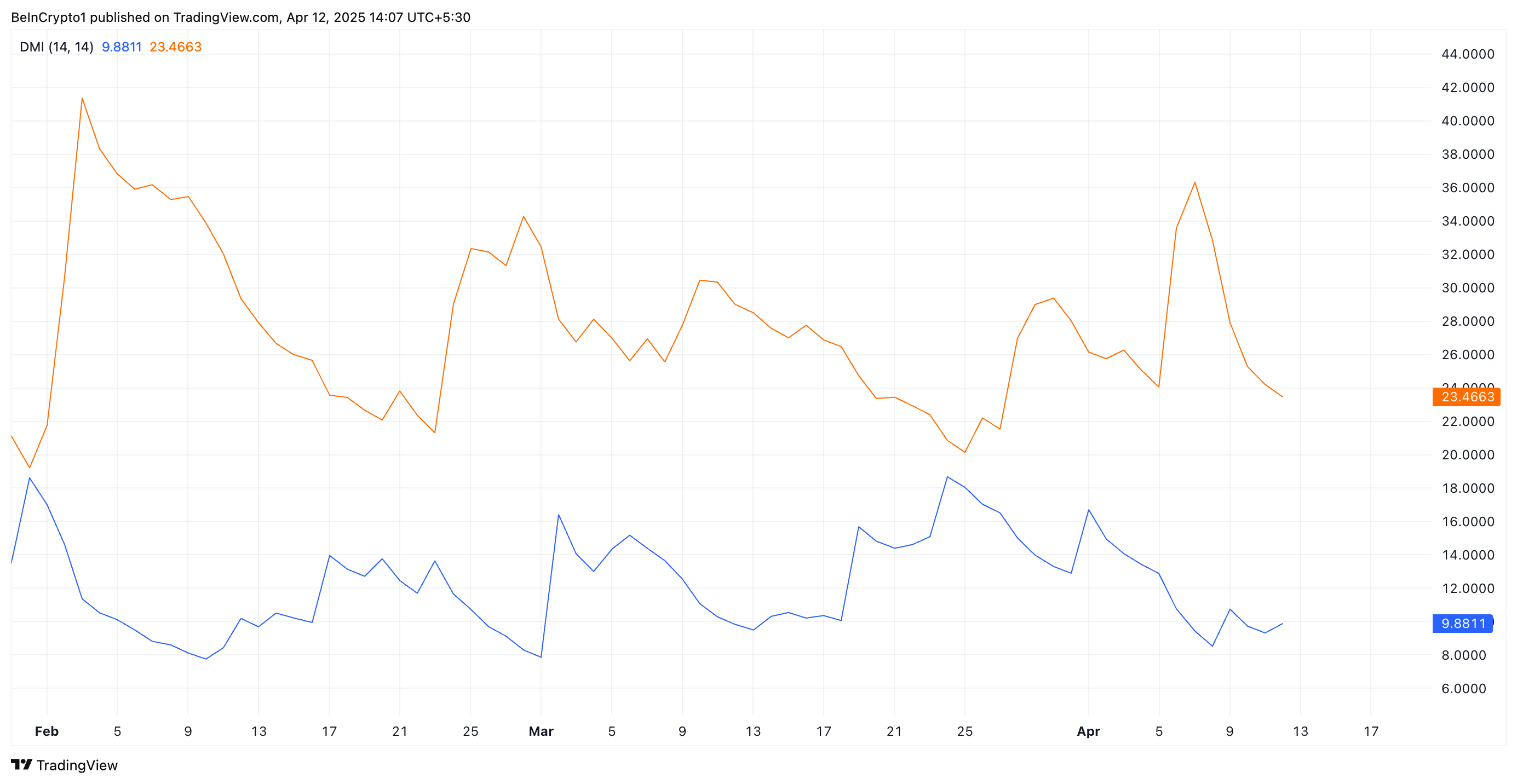
The DMI indicator measures the strength of an asset’s price trend. It consists of two lines: the +DI, which represents upward price movement, and the -DI, which represents downward price movement.
As with ETH, when the +DI rests below the -DI, the market is in a bearish trend, with downward price movement dominating the market sentiment.
Ethereum’s Price Could Drop Below $1,500
The lack of institutional capital could delay any significant rebound in ETH price, further dampening short-term prospects for recovery. If demand leans further, ETH could break out of its narrow range and follow a downward trend.
The altcoin could fall below $1,500 in this scenario to reach $1,395.
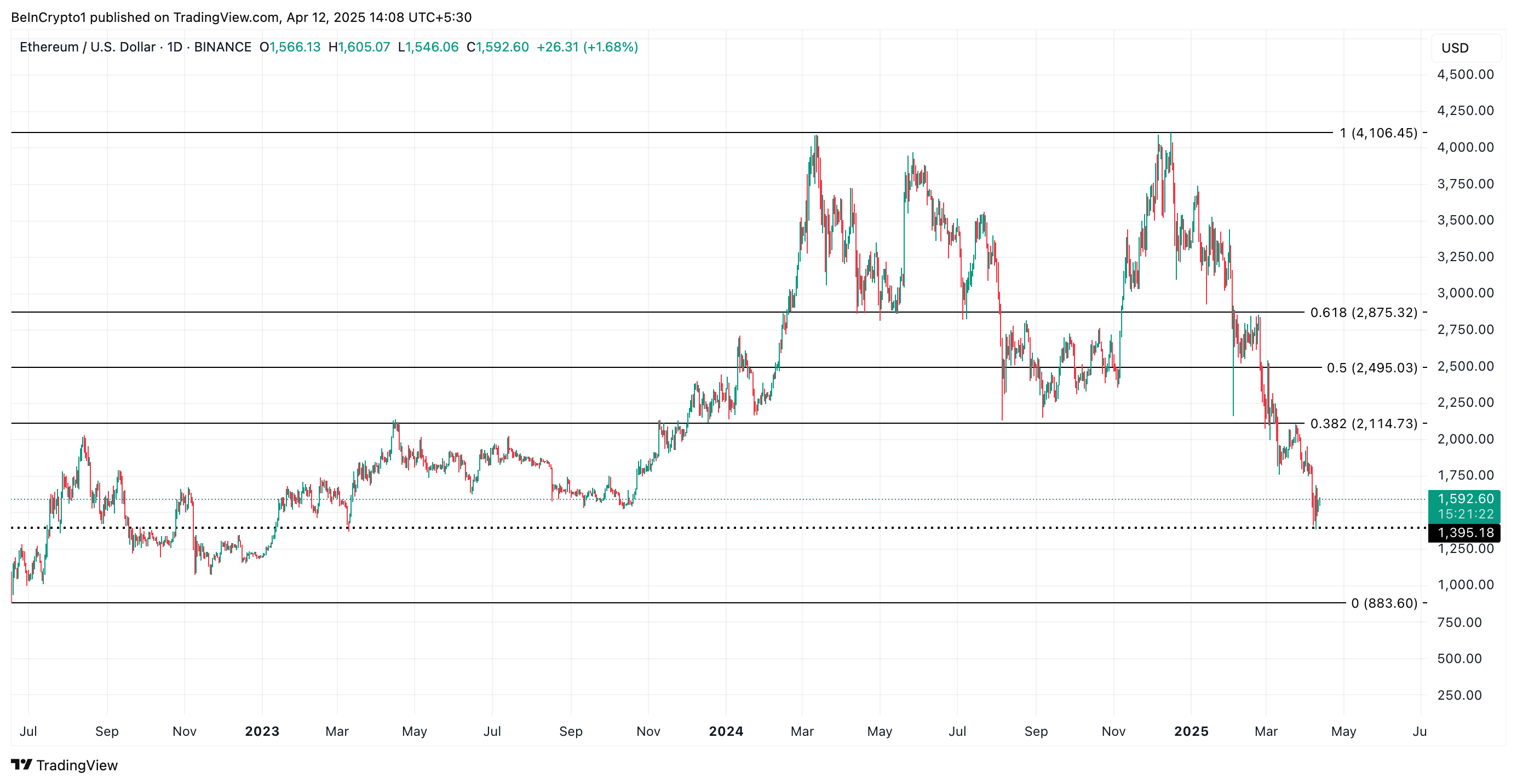
However, if ETH witnesses a positive shift in sentiment and demand spikes, its price could climb to $2,114.
Disclaimer
In line with the Trust Project guidelines, this price analysis article is for informational purposes only and should not be considered financial or investment advice. BeInCrypto is committed to accurate, unbiased reporting, but market conditions are subject to change without notice. Always conduct your own research and consult with a professional before making any financial decisions. Please note that our Terms and Conditions, Privacy Policy, and Disclaimers have been updated.
Market
SEC Signals Readiness to Rethink Crypto Trading Oversight


Mark Uyeda, Acting Chair of the US Securities and Exchange Commission (SEC), has encouraged crypto industry participants to offer input on a proposed framework. The initiative is designed to ease regulatory pressure on digital asset trading.
Speaking at the SEC’s April 11 Crypto Task Force roundtable, Uyeda highlighted the growing disconnect between current regulations and the realities of blockchain innovation.
SEC Considers Federal Licensing Model to Streamline Crypto Compliance
Uyeda likened the evolution of crypto markets to the early days of US securities trading, which began under a buttonwood tree in New York City.
He argued that early brokers created rules that suited the needs of their time. In the same way, modern regulators must now consider frameworks that align with the distinct structure of crypto platforms.
Unlike traditional exchanges, crypto trading systems often combine custody, execution, and clearing into one platform. Blockchain technology makes this integration possible.
Uyeda pointed out that this setup can improve transparency, efficiency, and trading speed. He also highlighted benefits like 24/7 trading through smart contracts and streamlined collateral management via tokenization.
“Blockchain technology offers the potential to execute and clear securities transactions in ways that may be more efficient and reliable than current processes,” Uyeda said.
Still, Uyeda acknowledged that the architects of US securities laws never anticipated blockchain technology or decentralized systems. As a result, compliance challenges have emerged as many tokenized securities remain unregistered and ineligible for national exchanges.
Besides that, existing rules, such as the order protection rule, are also difficult to apply in hybrid trading environments where assets move between on-chain and off-chain systems.
Uyeda also criticized the current patchwork of state-by-state licensing requirements, which create barriers for crypto firms aiming to operate nationwide.
To address these gaps, Uyeda proposed a conditional relief framework that could support experimentation while maintaining investor protections. He also suggested that a unified federal licensing model under the SEC could simplify compliance and enhance market consistency.
“Under an accommodating federal regulatory framework, some market participants would likely prefer to offer trading in both tokenized securities and non-security crypto assets under a single SEC license rather than offer trading solely in non-security crypto assets under fifty different state licenses,” Uyeda said.
Nonetheless, he invited industry experts to recommend specific areas where such relief would unlock practical use cases without undermining market integrity.
Uyeda’s remarks signal the SEC’s growing awareness that digital asset regulation must evolve. While long-term reform may take time, the proposed relief framework could create room for innovation without compromising market safeguards
Disclaimer
In adherence to the Trust Project guidelines, BeInCrypto is committed to unbiased, transparent reporting. This news article aims to provide accurate, timely information. However, readers are advised to verify facts independently and consult with a professional before making any decisions based on this content. Please note that our Terms and Conditions, Privacy Policy, and Disclaimers have been updated.
-

 Market22 hours ago
Market22 hours ago3 Altcoins to Watch for Binance Listing This April
-

 Market19 hours ago
Market19 hours agoThis is Why The Federal Reserve Might Not Cutting Interest Rates
-

 Regulation23 hours ago
Regulation23 hours agoUS Senators Reintroduce PROOF Act To Set Reserve Standards for Crypto Firms
-
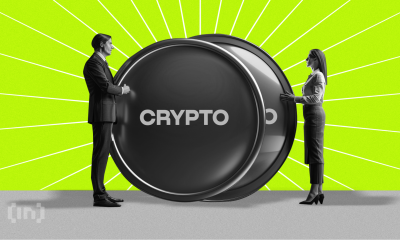
 Market20 hours ago
Market20 hours agoLawmakers Propose the PROOF Act to Avoid Another FTX Incident
-
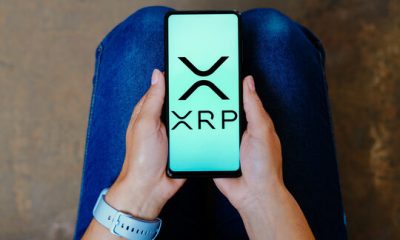
 Market18 hours ago
Market18 hours agoXRP Price Flashes Symmetrical Triangle From 2017, A Repeat Could Send It as Flying To $30
-

 Market17 hours ago
Market17 hours agoCrypto Whales Are Buying These Altcoins Post Tariffs Pause
-

 Market16 hours ago
Market16 hours agoBinance and the SEC File for Pause in Lawsuit
-

 Market7 hours ago
Market7 hours agoArthur Hayes Expects Bitcoin Surge if Fed Injects Liquidity














